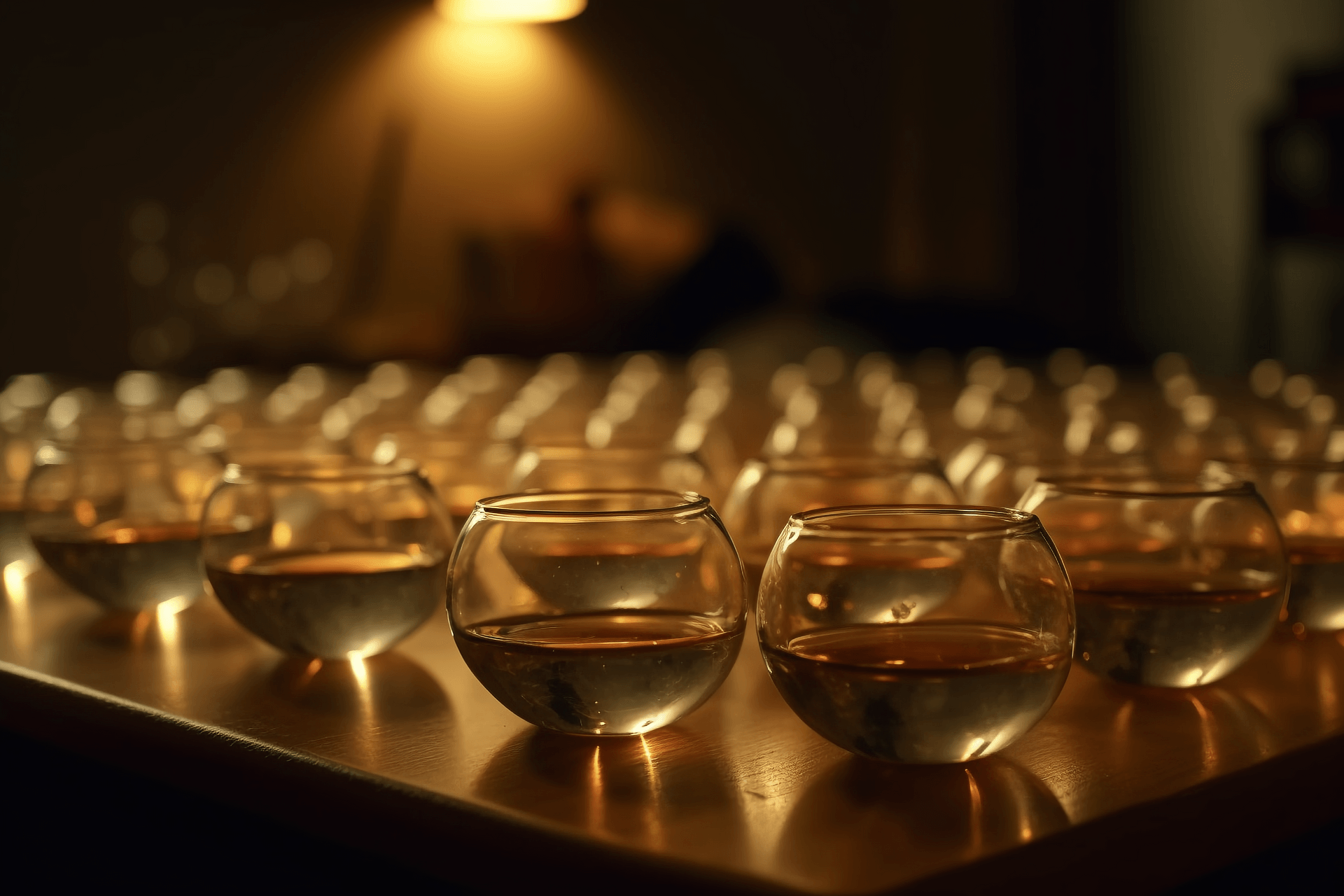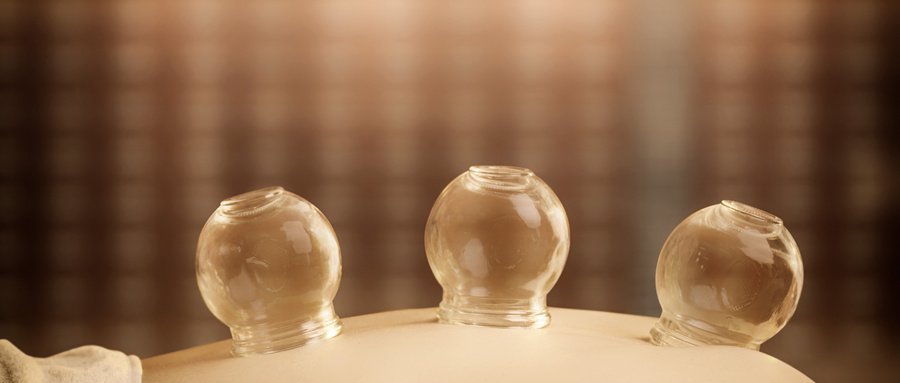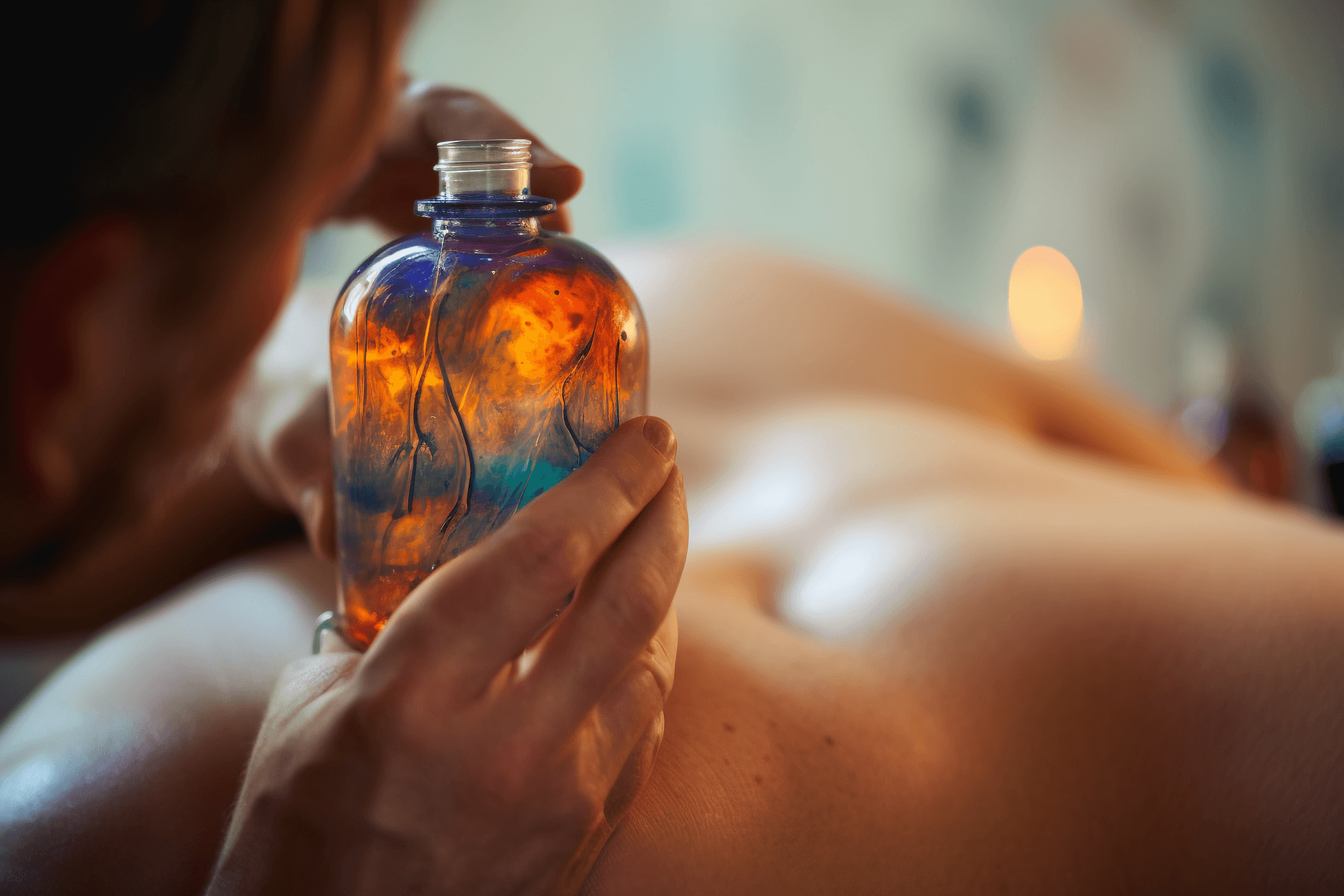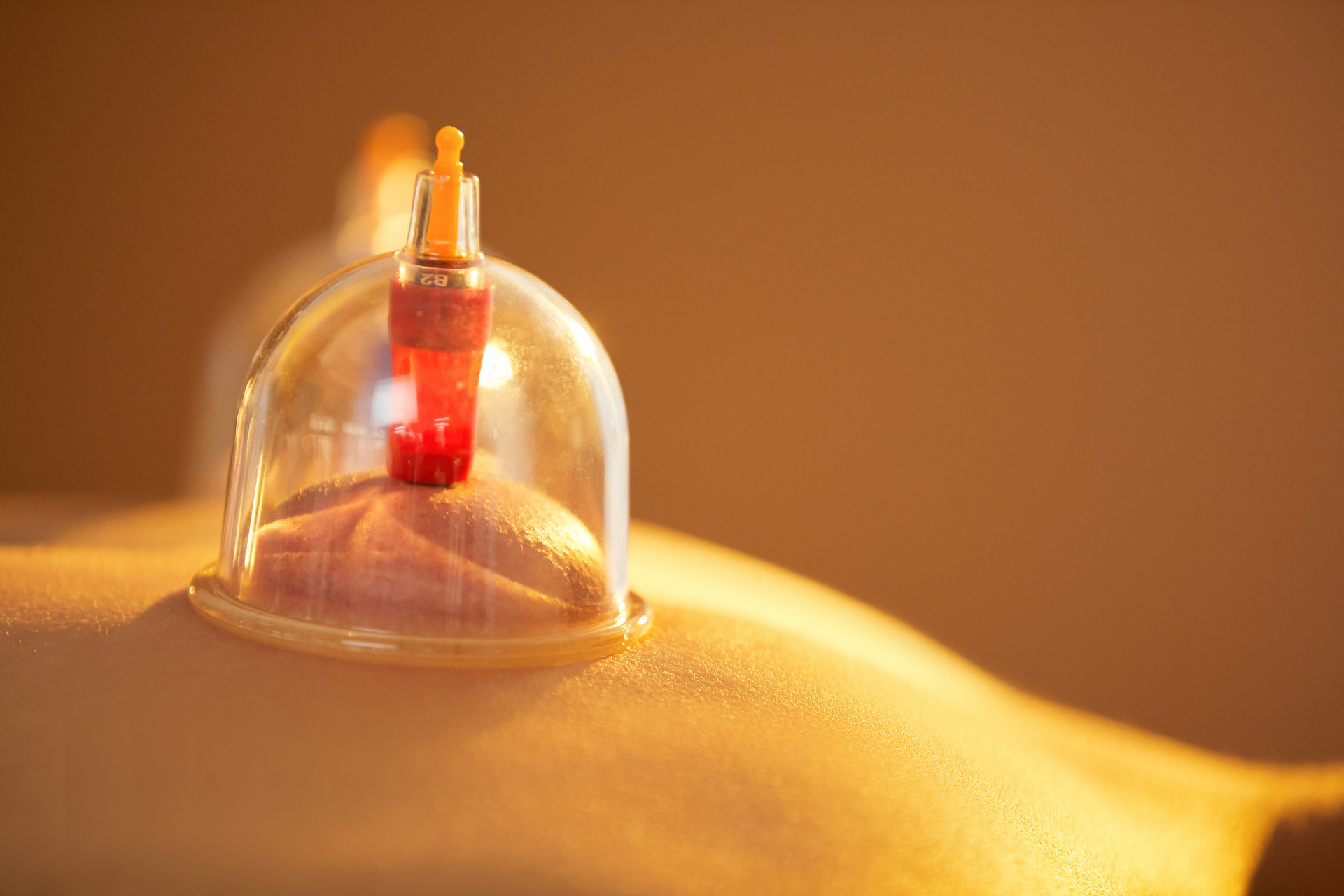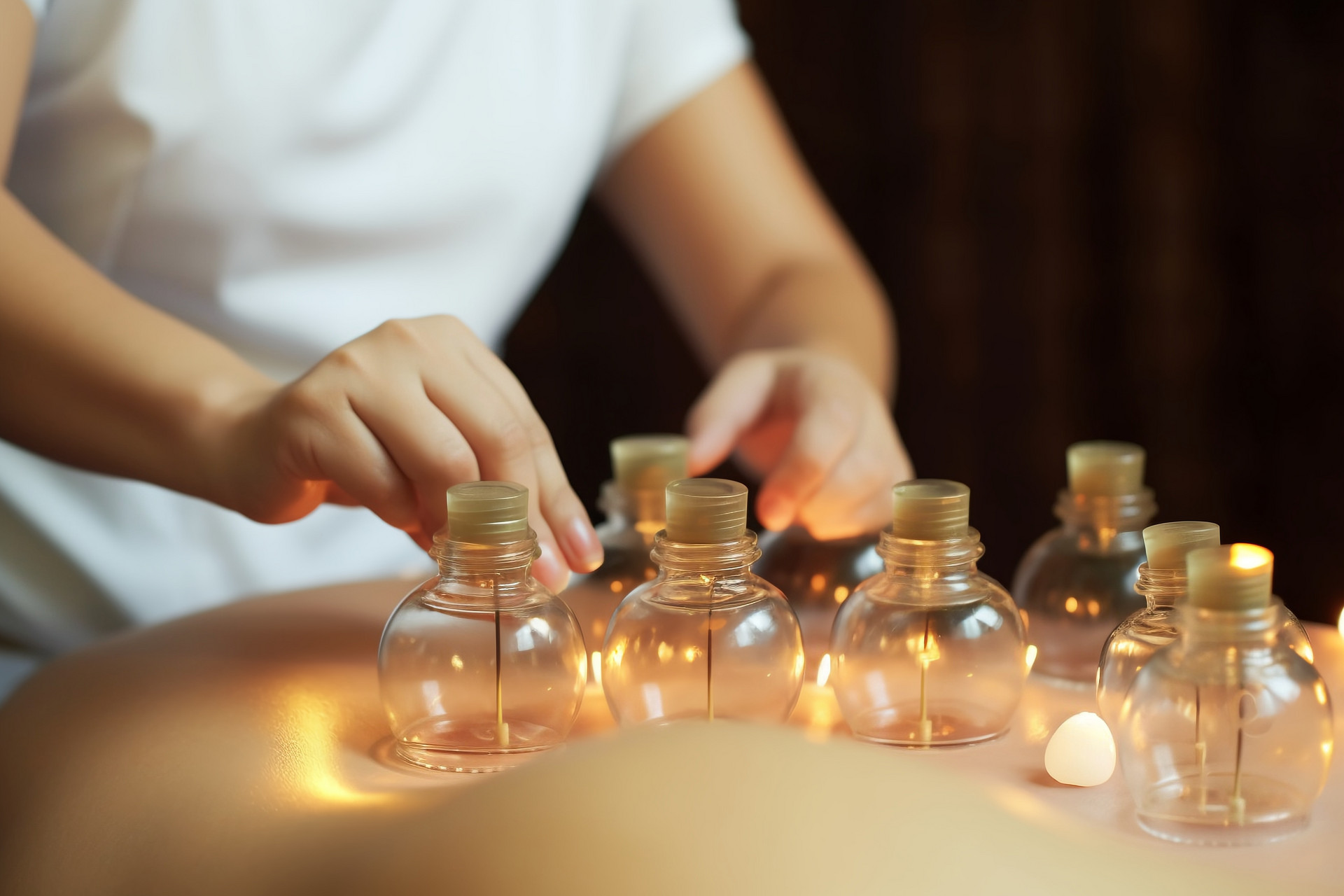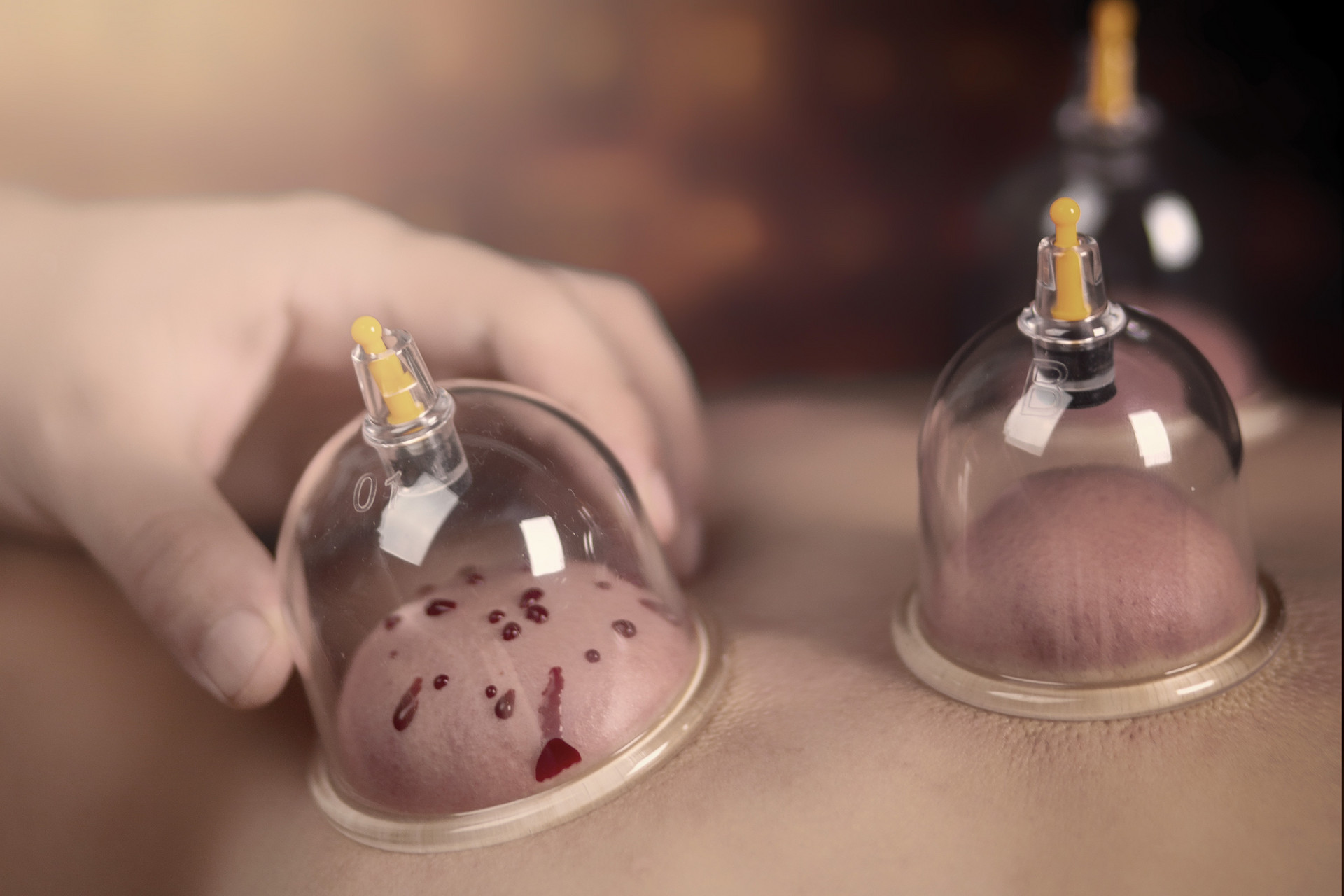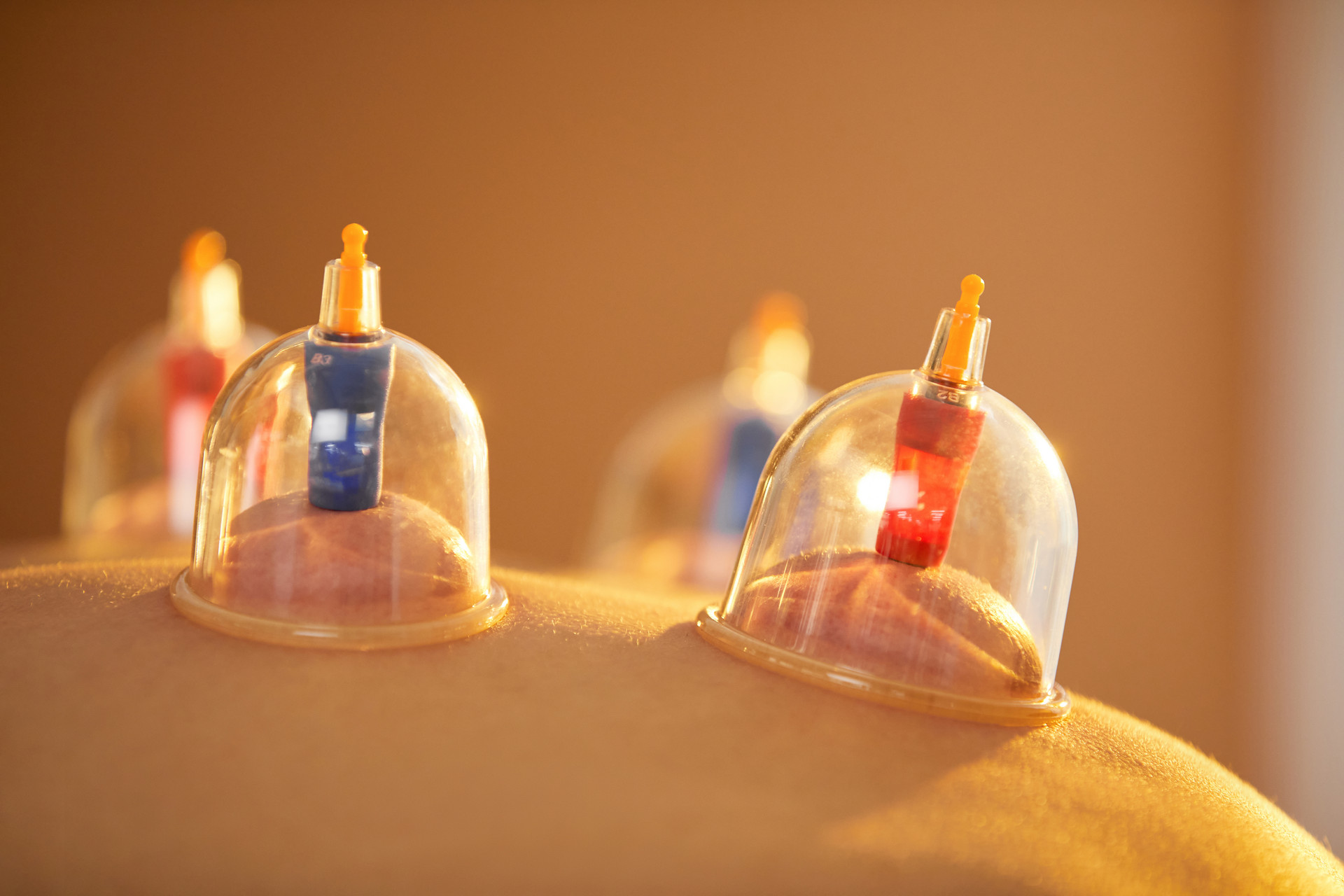Cupping therapy, also known as walking cupping, pushing cupping, and sliding cupping, is commonly used to treat large lesions, thick and smooth muscles, or areas where cupping needs to be done along a meridian or a section of a meridian. Glass or ceramic cups are preferred for cupping therapy, with smooth edges to prevent skin abrasions. The specific procedure involves applying a lubricant to the area to be treated, then using a flash fire method to create suction and attach the cup to the skin. The cup is then moved back and forth along the meridian or desired cupping line until petechiae appear on the skin. During the procedure, attention should be paid to adjusting the negative pressure inside the cup based on the patient's condition and constitution, as well as the speed, intensity, and pressure of cupping. The negative pressure should not be too strong, as it may cause excessive pain that the patient cannot tolerate. When sliding the cup, it should be gently pushed from the back of the neck of the cup, with even force, to prevent the cup from falling off.
For different body parts, different cupping methods should be used. For the lower back, the cup should be pushed up and down along the vertical direction. For the chest and ribs, the cup should be pushed parallel to the direction of the ribs. For the shoulders and abdomen, the cup can rotate or be moved in a rotating motion at the desired cupping site. For the limbs, the cup should be pushed back and forth along the longitudinal axis.
There are three methods of cupping therapy:
(1) Light suction and fast sliding method: the cup creates a 3-4mm suction on the skin, with a sliding speed of 60cm per second, and the degree of cupping is determined by the skin turning red. This method is suitable for external wind-cold invasion, numbness due to skin arthritis, peripheral neuropathy, etc. It is performed once a day for 3-5 minutes, with 10 sessions as one course of treatment.
(2) Heavy suction and fast sliding method: the cup creates a 6-8mm suction on the skin, with a sliding speed of 30cm per second, and the degree of cupping is determined by the skin turning purplish-red. This method is suitable for meridian and visceral dysfunction. It is performed once a day for 3-5 minutes, with 10 sessions as one course of treatment.
(3) Heavy suction and slow sliding method: the cup creates a suction of more than 8mm on the skin, with a slow sliding speed of 2-3cm per second, until the skin turns purplish-red. This method is suitable for meridian qi and blood stagnation, tendon and meridian malnutrition, and other conditions such as chronic cold and damp diarrhea, sciatica, muscle atrophy, and gout. This method provides the greatest stimulation among the cupping methods, and can draw out stagnation of cold, dampness, evil, and toxins from the skin to the organs and meridians. It is performed once a day for 3-5 minutes, with 10 sessions as one course of treatment. It is used in excess syndromes to move against the direction of the meridians, and in deficiency syndromes to move along the direction of the meridians.


